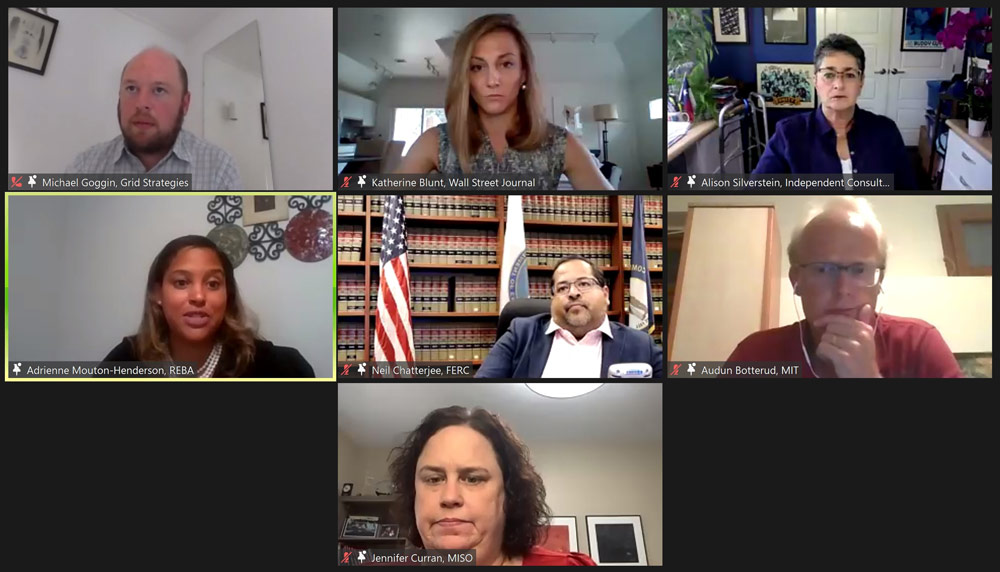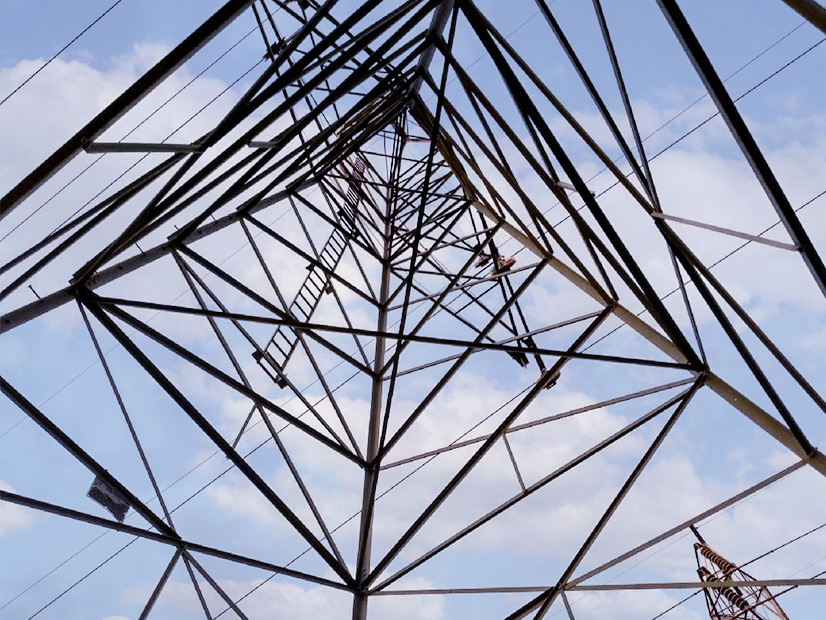Major transmission construction will help the grid tolerate increasingly severe weather, but bickering over cost sharing needs to end, panelists said during an American Council on Renewable Energy (ACORE) webinar Thursday.
“Making the grid bigger than the weather is what we need to do to integrate large amounts of wind and solar,” said Grid Strategies Vice President Michael Goggin, author of a report on transmission.
“If you make the grid large enough and strong enough,” Goggin said, imports from neighbors can help a region withstand even the most widespread weather event.
ACORE’s webinar highlighted the Grid Strategies report, “Transmission Makes the Power System Resilient to Extreme Weather.” The report examined five recent extreme weather events and how transmission buildout either helped or could have helped mitigate the severity of the grid emergencies. It concluded that:
- During mid-February’s winter storm, each additional gigawatt of tie capability between ERCOT and the Southeast could have saved the Texas grid operator almost $1 billion with power flowing to “hundreds of thousands” of customers.
- During an August 2019 heat wave in Texas, each additional gigawatt of tie capability between ERCOT and the Southeast could have saved ratepayers nearly $75 million.
- During the Northeast’s “bomb cyclone” arctic blast December 2017-January 2018, each additional gigawatt of interregional transmission ties “could have saved New England, New York and the Mid-Atlantic regions $30-40 million” apiece.
- More transmission ties between New England, New York and the Mid-Atlantic region during the 2014 Polar Vortex event would have saved ratepayers tens of millions.
- Had MISO and PJM added a gigawatt of transfer capability between their footprints, they could have together saved $2.4 million during the Midwest’s Polar Vortex event in early 2019.
Goggin said MISO and SPP were able to largely keep power flowing during the winter storm because of their well established transmission systems. ERCOT could have greatly reduced the disaster and kept the lights and heat on for hundreds of thousands of customers “had [it] had stronger ties, particularly to the Southeast,” he said.
“Much like we built the national highway system for security and economics, we need to build the national grid,” Goggin said.
Webinar panelists agreed that fast and comprehensive transmission buildout will allow the grid to deliver, even in dire weather.
“I couldn’t agree more with the takeaway that we need more transmission buildout,” FERC Commissioner Neil Chatterjee said of the report. “It’s clear to anyone paying attention that we’re experiencing more frequent and more severe weather events.”
Chatterjee said he’d like to see larger regional and interregional projects built. He said FERC’s Order 1000, meant to foster competition, has “sadly” become a barrier to backbone transmission projects and has instead driven more local projects.
Factoring resilience into transmission planning “makes a lot of sense,” Chatterjee said. He said he hoped that resilience considerations in the planning process could be handled in a “non-political” fashion, especially when dealing with cost allocation.
“In the MISO space, cost allocation is the problem,” said Jennifer Curran, MISO’s vice president of system planning. The RTO’s membership is in the throes of a heated cost-allocation debate over the RTO’s burgeoning long-range transmission plan. (See South Regulators Lambast MISO Long-term Tx Planning.)
Curran said that for resilience benefits to be divvied up in cost allocation, the advantages must be demonstrated in a “believable and consistent” way.
Calls for a National Plan
Independent energy consultant Alison Silverstein said she supports a national, taxpayer-funded macro grid agency to oversee major transmission development.

“RTOs and utilities have been too local, if I can say that of a 15-state footprint. It’s too parochial a set of calculations … for national, massive, long-term grid benefits,” Silverstein said. “We are using process to kill speed. And we are using process to kill production of new transmission to deliver energy.”
Silverstein said it remains to be seen whether Texas will lose its cherished regulatory “sovereignty” over grid decisions.
“I will tell you as an ex-Texas regulator, it’s fun to be king. It’s fun to have your own patch,” she said. But she said Texas has not been eager to share infrastructure costs with other states, “unless we’re going to make out like bandits, like with pipelines.”
“I think the cost of reliability and resiliency is very different region-by-region. We can’t keep piecemealing it … and operating in our own silos,” said Adrienne Mouton-Henderson, deputy director of policy innovation at Renewable Energy Buyers Alliance.
Mouton-Henderson called for a federal-level development of “best practices across the entire United States” to guide grid planning. She said grid planners can no longer afford to ignore intensifying weather threats.
Goggin said transmission belongs in a federal infrastructure bill and that it could be funded in part by the tax code. He said national leadership could use the more progressive income tax to help build transmission instead of the “regressive” method of cost recovery through electric bills. Goggin said that while electric bills vary between economic classes, it’s not by much and it unfairly straps disadvantaged populations with transmission infrastructure costs.
He said MISO’s 2011 portfolio of multi-value projects are a success story of major transmission projects that have broad cost allocation.
“If we continue with the status quo of fighting over who pays for which lines, we’re not going to make progress,” Goggin said.
Curran said extreme weather and renewable penetration muddles the straightforward transmission planning that has occurred thus far.
“We’ve had the luxury of using history to plan for the future,” she said.
Curran said the east-to-west power flows during the February winter storm were highly abnormal and the unusual flows highlight that transmission planners have much more to consider in the future.
“When we designed the transmission, it was designed for west-to-east flows,” she said.
“Trust me, widespread misery accompanied the five days we were out of power,” Silverstein, a resident of Austin, Texas, said.
Silverstein said had ERCOT had just a few hundred megawatts of transfer capability, it could have slowed the rate of frequency decline and secured more time, allowing utilities to better prepare and restore power faster. She reminded the audience that an estimated 700 people died and ERCOT was a mere four minutes away from total grid collapse.
“No one should have to go through those kinds of human trauma” because we don’t have sufficient transmission, Silverstein said.



